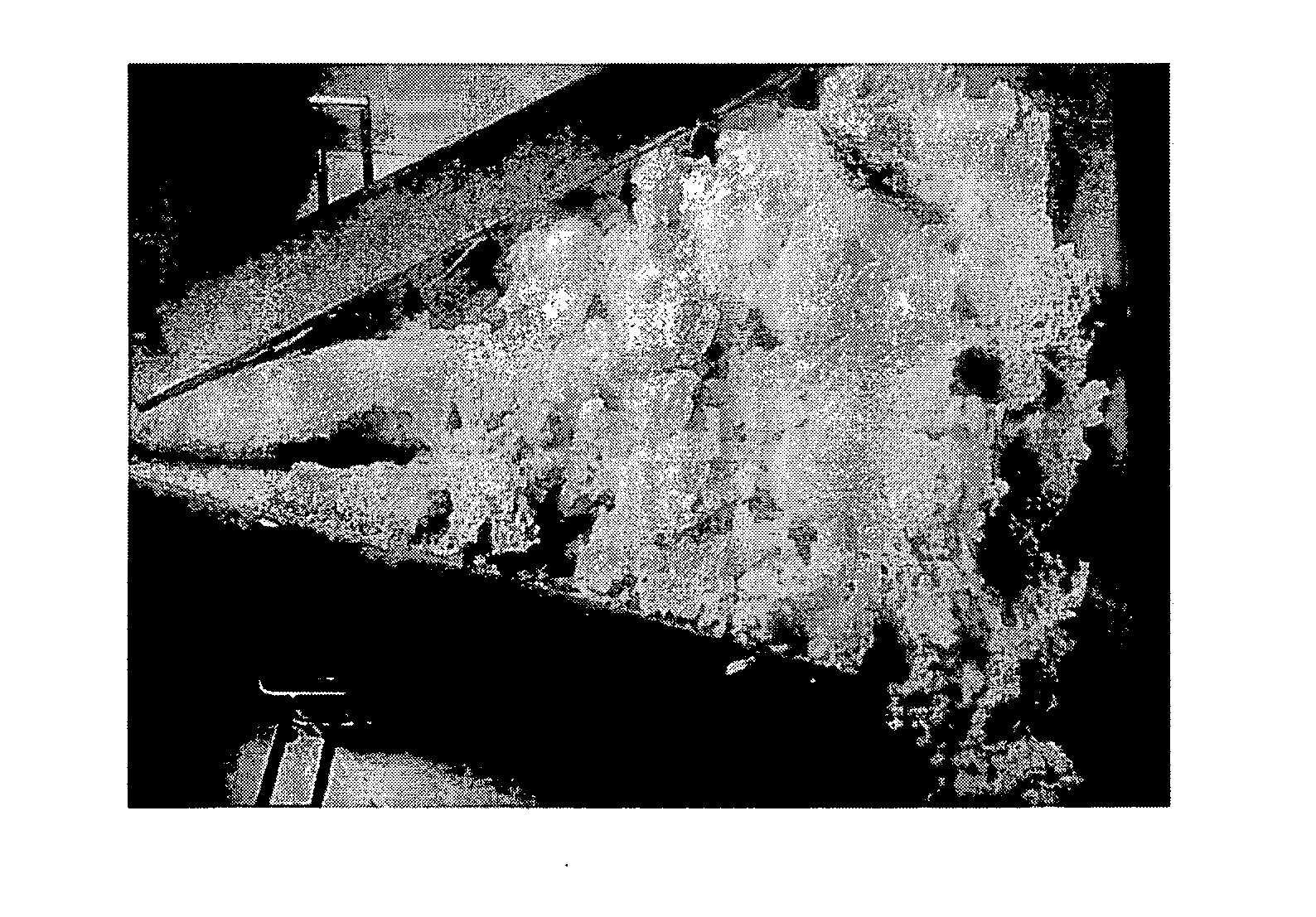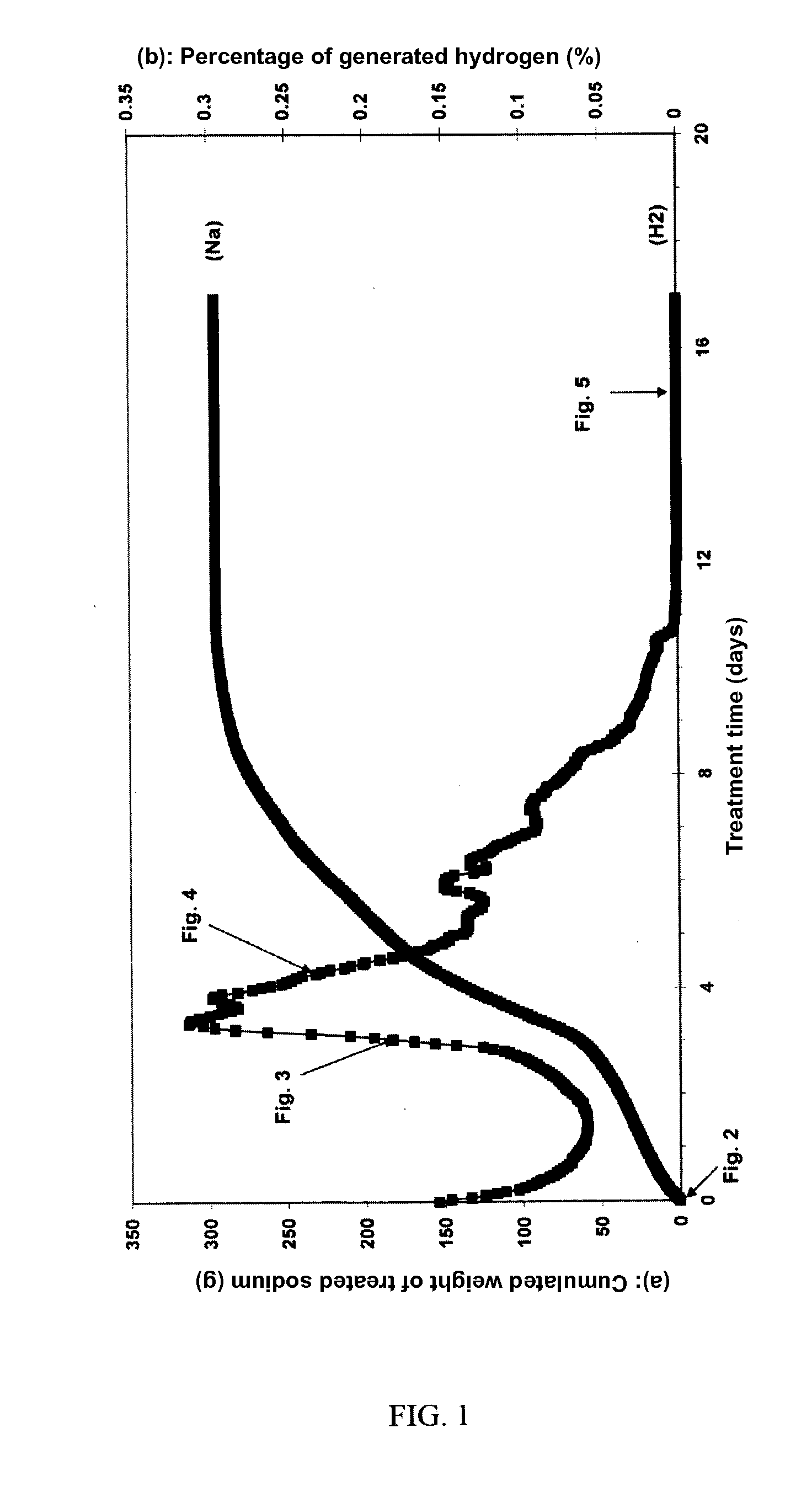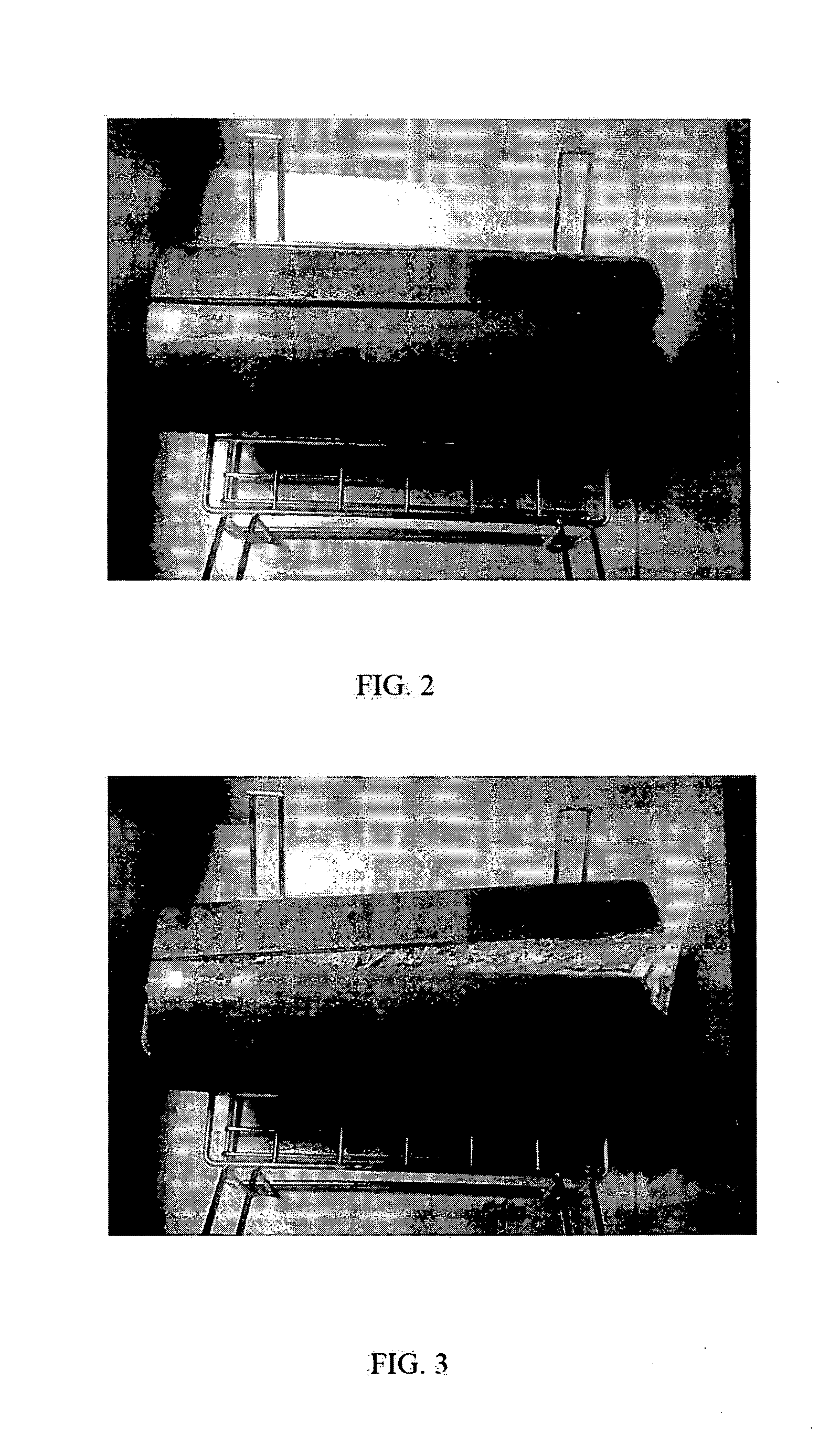Method of treating a structure containing sodium and a radioactive substance
a radioactive substance and structure technology, applied in the field of nuclear waste treatment, can solve the problems of imposing very strict safety and security levels, generating liquid waste, and being difficult to control, and achieve the effect of minimizing operations and being easy to controllabl
- Summary
- Abstract
- Description
- Claims
- Application Information
AI Technical Summary
Benefits of technology
Problems solved by technology
Method used
Image
Examples
Embodiment Construction
[0041]1—Device Suitable for Implementing the Method of the Invention.
The treatment method of the invention is generally carried out in an enclosure enabling the carbonation reaction to be confined. Because of the presence of a radioactive substance within the structure to be treated, this enclosure is generally a glove box.
This enclosure is associated with several units, which perform the following functions:[0042]mixing the treatment gases in order to obtain a reactive gas mixture,[0043]analyzing the gas upstream and downstream from the enclosure,[0044]discarding the gaseous effluents.
[0045]The enclosure and its associated units are described hereafter.
[0046]1.1—The Treatment Enclosure
This enclosure is intended for the confinement of the carbonation reaction, in particular the radioactive substance which is contained in the structure before and after treatment.
[0047]It thus forms an initial barrier, preventing the contamination of the facility in which the method of this invention ...
PUM
 Login to View More
Login to View More Abstract
Description
Claims
Application Information
 Login to View More
Login to View More - R&D
- Intellectual Property
- Life Sciences
- Materials
- Tech Scout
- Unparalleled Data Quality
- Higher Quality Content
- 60% Fewer Hallucinations
Browse by: Latest US Patents, China's latest patents, Technical Efficacy Thesaurus, Application Domain, Technology Topic, Popular Technical Reports.
© 2025 PatSnap. All rights reserved.Legal|Privacy policy|Modern Slavery Act Transparency Statement|Sitemap|About US| Contact US: help@patsnap.com



